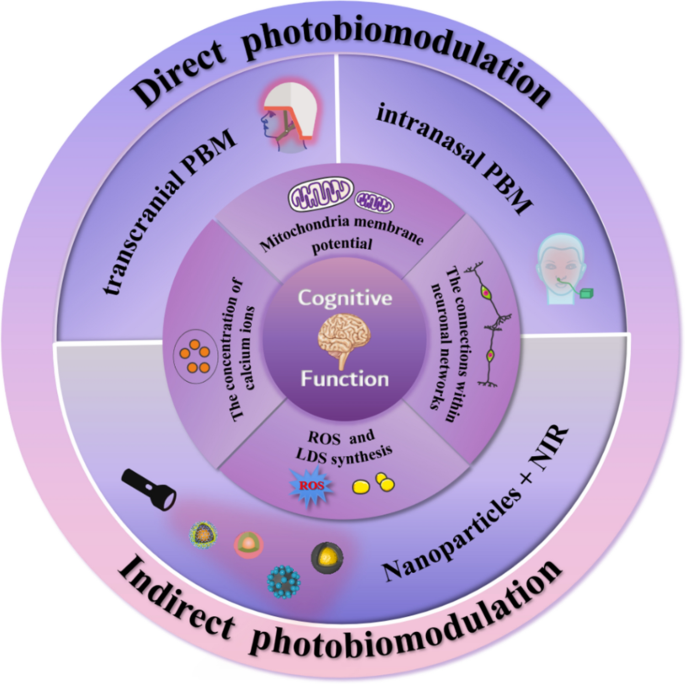An Unbiased View of Photobiomodulation
Wiki Article
The Definitive Guide to Photobiomodulation
Table of ContentsThe Definitive Guide to PhotobiomodulationSome Known Questions About Photobiomodulation.Photobiomodulation Can Be Fun For EveryoneAll about Photobiomodulation
Laser treatment is a medical therapy that uses focused light to promote a process called. During PBM, photons go into the tissue and engage with the cytochrome c complex within mitochondria. This communication triggers a biological cascade of occasions that leads to an increase in mobile metabolic rate, which can in addition to speed up the recovery procedure.There is consensus that the application of a healing dose of light to damaged or useless tissue causes a mobile action mediated by mitochondrial devices. Photobiomodulation. Research studies have actually revealed that these modifications can affect pain and swelling, along with, cells repair service
Changes in ATP, reactive oxygen species and nitric oxide comply with light absorption by Cc, O. These results are redox state and dosage dependent.

A Biased View of Photobiomodulation
PBM gadgets have been cleared for advertising by FDA via the Premarket Notification/510( k) procedure as adjunctive tools for the short-term alleviation of discomfort. These clearances were based on the presentation of scientific data to support such claims (Photobiomodulation). In this treatment, a source of light is placed near or touching the skin, permitting the light energy (photons) to pass through cells where it engages with chromophores found in cells resulting in photophysical and photochemical changes that result in changes at the molecular, cellular and cells levels of the bodyInterestingly, recent research suggests that light can improve performance in regular cells and cells. The potential applications of PBMT are various and are being explored experimentally at the standard scientific research, pre-clinical and professional level. The existing medical uses are for the relief of discomfort and swelling and the therapy of sporting activities injuries.

The therapy specifications and variety of sessions needed for PBMT are dependent upon area and reason. PBMT usually calls for greater than one therapy for optimum pain alleviation. It might take numerous treatments for the results to come to be noticeable. records that it can take anywhere from 8 to 30 sessions for a therapy to be completely efficient, and some individuals discover it necessary to undergo therapy 2 to 4 times each week.
Photobiomodulation - Truths
Treatment criteria for PBMT were initially established utilizing cells artificial insemination and in little animal versions. These therapy parameters typically had a low irradiance and fluence and worked well for cutaneous applications. Nevertheless when clinicians started to make see use of PBMT to treat structures that lay much deeper in the body, they utilized these criteria with adverse outcomes.
We currently recognize that these adverse studies was because of inaccurate tool and therapy criteria for transcutaneous therapy of deeper structures. Current advances in laser therapy tools and even more research study into the proper dosages have actually substantially boosted the outcomes of PBMT. For dealing with deep cells, the wavelength of light made use of figures out the depth of infiltration right into a cells.
It is vital that a medical professional makes use of the suitable wavelength of light and criteria to deal with a problem. One wavelength and one collection of therapy specifications will not be reliable for all problems. Negative side results have not been reported from the use of PBMT.
The Definitive Guide for Photobiomodulation
In the very first experiment, Dr. Endre Mester, utilized cut rats and observing how the laser affected their ability to grow hair compared to the group that was not obtaining LLLT. He discovered that the group of computer mice receiving LLLT were able to grow their hair back more quickly than the team of computer mice that really did not get LLLT (Hoon C, et alia; 2012).This treatment is labelled this method to differentiate the distinction in between the lasers some professions make use of to cut (eg. in surgical treatments, or oral procedures). Low-level light therapy is painless, non-invasive therapy. It is used to reduce swelling, swelling, and persistent joint conditions, decrease discomfort and increase injury healing of nerves and cells (Hoon C, et al; 2012).
LLLT has a biphasic reaction, indicating that lower doses are normally attended be a lot more useful than greater dosages. That being stated, dosages higher or read this article lower than the ideal dosage does not impact (Hoon C, et alia; 2012). Consequently, it can be hard to have studies on LLLT with numerous parameters.
Some business incorporated both (LED and laser) to offer an extra all-round treatment given that lasers can pass through much deeper than LED and infrared light (Norman Doidge, The Mind's Method of Healing, 2015). Throughout therapy, the area that is being treated is subjected to LED light from a Biography, Flex Laser, which is at 660 nm wavelength, followed by infrared light at 830-840 nm wavelength.
Report this wiki page